Here it is. The holiday season.
Party time, candy and cookie time, rich food time. Estimates for how much Americans gain during this season range from 5 to 15 pounds, depending on who’s doing the reporting. And the particular parties you bless with your presence, I imagine. I wonder if the weight gain phenomenon is more prevalent in New England and the northern climes, but I’d love to hear stories and strategies from those in warmer places as to their situation and strategies for maintaining a healthy weight (and healthy habits) through this time. I imagine every region has it’s own spin on the bacchanal that is the holidays.
Here are few survival tips:
Accept the fact that you won’t be losing weight this month.
Regardless if you are a party momma or a stay-at-homer, there is just more high-calorie food around. Just maintaining is a feat this time of year, so relax on weight goals right now. January will be here soon enough.
Keep on moving. Practice stress management. Tie them together.
Keep physical activity top-of-mind this month, and don’t miss an opportunity to move. Physical activity is great stress management, so if you didn’t get your packages in the mail on time, didn’t get to cards this year, didn’t knit all your friends sweaters or didn’t get invited to the right parties, move a little to release the emotion that sits in your body as a result of life not being perfect.
Focus on the peeps, not the table.
Food traditions this time of year carry deep resonance and a strong pull. For me, it’s my mom’s cookies, and anything resembling eggnog. It’s not always easy to remember that the reason for the season is really love, hope and connectedness. I know that many family relationships can be challenging, and that can drive us to seek comfort from seasonal goodies in unhealthy quantities. There’s a Buddhist practice that may be helpful in working with relationships this season. The Dali Lama describes a practice of bowing down to the difficult people in your life, and thanking them for the opportunity they have provided to help you to experience spiritual growth. Love and honor them! For me, this practice a) cracks me up a little, and b) opens me up to another way to seeing things beyond the way my conditioned judgemental mind does. Somehow, it makes it easier for me to step back and see the people who challenge me differently, and to forgive them for the pain they cause me.
And finally:
Resist and renounce projections as to what it “should be”
As gifted American poet Mary Oliver says, Whoever you are, no matter how lonely or difficult your life is, the world opens itself to you this season. My wish for you is to feel that magic. My wish for you is that someone does the Buddhist practice of loving you when you cause them pain. And I wish you peace.
Namaste
Annie
This year there are a smattering of studies suggesting that meditation, yoga and mindfulness practices improve gene expression. Gene expression relates not only to family traits like hair color, but to the smooth operation of every cell and tissue in your body for the rest of your life.
Gene expression and epigenetics
Epigenetics is the big news in genetics that no one seems to be talking about. Me and my colleagues at Kripalu, however, are very excited. The concept is that we each have an internal environment, and we have much more control over that internal “soup” in which our genes unfold that we’d thought, is good news for those of us in the yoga lifestyle world. Everything you do in life – the food you choose (and choose not to) eat, the way you work relationships, how you feel about yourself and everything around you – influences your internal environment. Epigenetics is the environment – the internal environment – you create through lifestyle.
There’s a shamanic teaching that you become the result of all the vibration you surround yourself with. So, love that car. Love that apartment, and really love all the foibles of your spouse. Life (and your health) will be better for it. This ancient teaching sounds modern and true in the age of epigenetics.
These are early, small studies but are fascinating enough to point the way for larger trials. There is geek drama here. In one study, in the journal Psychoneruoendocrinology, a group of 19 people with a regular ongoing meditation practice were tested before and after a day of intensive mindfulness meditation practice. A control group of 21 people who did not meditate were tested before and after a day of leisure activities. At the beginning of the study, people in each group had similar test results for genetic markers. After the intervention the meditation group had significantly improved levels of epigenetic regulatory enzymes, lower expression of pro-inflammatory and other chronic disease promoting genetic markers.
After one day.
The take home
Everything that you do matters. You create much of who you are by what you do and how you feel. Eating a whole-foods plant-based diet, learning how to deal with the ever-increasing levels of stress in our worlds, and doing what you can to enjoy your life matters. There are a growing number of quality resources to help you – find an author or teacher of yoga, meditation or mindfulness that resonates with you, and practice.
Here are just a few:
- Kripalu is filled with wonderful teachers, many of whom now have CD practices and books available in addition to offering workshops.
- I love Sally Kempton. She has been practicing and teaching for decades, and has a rare combination of wisdom, kindness and clarity. She’s in the zone.
- Then there’s me. My book, Every Bite is Divine uses yoga and mindfulness in combination with nutrition awareness to help find peace in the war on weight.
- Yoga and Diabetes: Your Guide to a Safe and Effective Practice, my second book, with co-author Lisa Nelson, MD comes out this summer. More on that later.
- I put time and energy into my almost-montly newsletter that aims to inspire and guide a mindful and botanical integrative whole-foods lifestyle. Yoga, Botanicals, Nutritional Science, Fun and Creativity. That’s me. Check out the newsletter here.
- You might also enjoy:
- Begin a yoga practice: tips for a happy introduction.
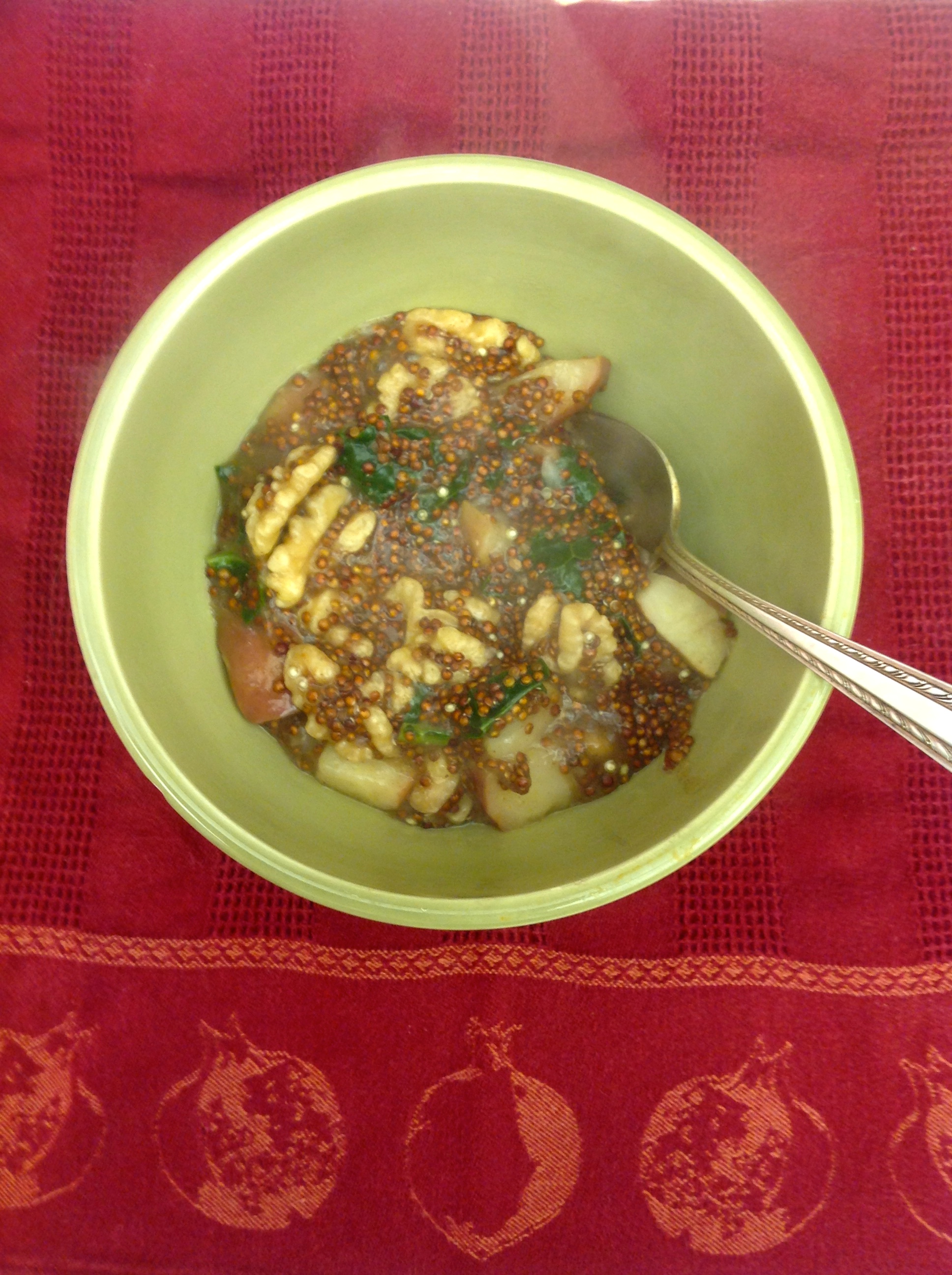
My go-to breakfast is a pastured egg over greens with a slice of sprouted grain toast.
But the winter chill came to call in the Shire this week, which got me hankering for a warm bowl of what my husband loving refers to as gruel. What’s a low-grain gal to do? Quinoa to the rescue – it’s actually a seed, has a great nutrition profile and cooks up quickly compared to most grains. I tried an experiment with some lacinato kale that was waiting so patiently for me to eat it this week, turning yellow stalk by stalk. At first I wondered if I’d made a green mess of a mistake, but you can see it’s lovely. It was delicious in this naturally sweet (from apples and spices) breakfast of Apple walnut quinoa with kale.
Ingredients
2/3 cup water
1/3 cup quinoa, rinsed in cold water
1 small apple, cubed
2 leaves lacinato (dinosaur) kale, sliced
1/4 cup walnuts
2 pods cardamom seeds, peeled (eat the spice, not the husk!)
dash of cinnamon, nutmeg and black pepper
Directions
Bring water to a boil in small saucepan. Add rinsed quinoa, lower to medium heat and cook for 10 minutes or until seeds get larger and soft. Add remaining ingredients and cook about 5 minutes more, until quinoa seeds pop open and you can see the little light curl emerge from them. If you so choose, top with grass-fed yogurt.
Here are a couple other cold weather recipes…
Fire cider
Garlicky leek soup
Spicy corn & black bean soup
Stay warm!
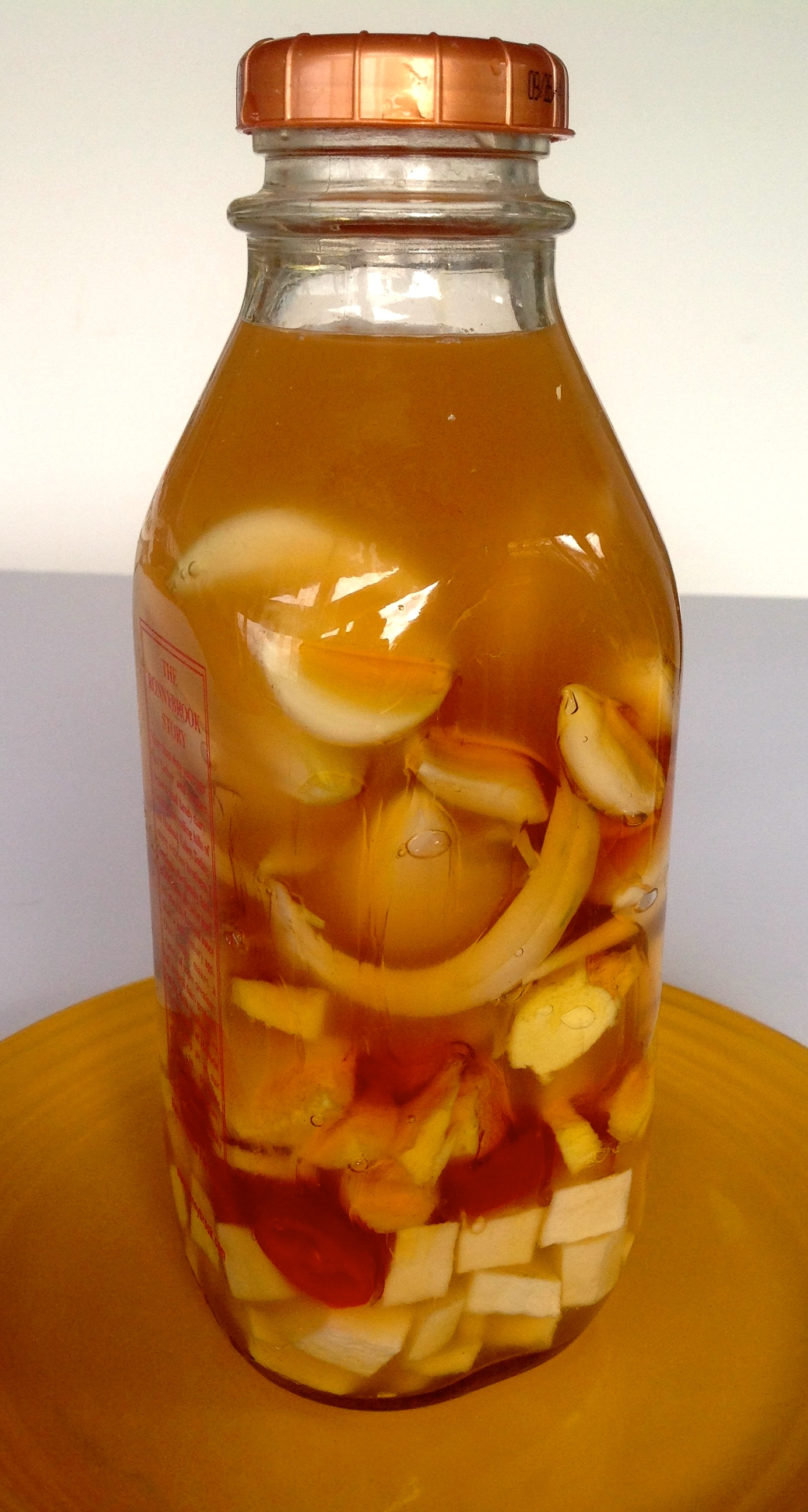
As the season changes and temperatures cool herbalists make a batch of fire cider. This old folk remedy aims to keep the chill away and prevent colds. With garlic, horseradish, ginger, and onions – all phytonutrient powerhouses – the nutritional biochemist in me is intrigued.
I made my first batch based on a recipe given to me by my herbal teacher Pam Montgomery. Pam’s recipe called for a fresh cayenne pepper, but couldn’t find that fresh so used a jalapeno.
I’ve got tons of leftover horseradish to play with this week. Culinary adventure to be sure.
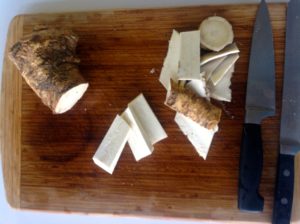
Awareness
This recipe comes with some gentle cautions. I handle fresh horseradish and hot peppers with gloves. The heating phytochemicals in these plants can actually burn tender skin. They are powerful and demand respect, but please don’t let that stop you from exploring.
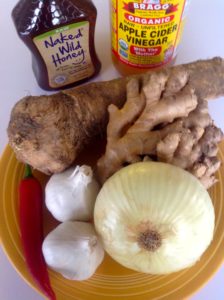
Ingredients
1/4 cup fresh horseradish root, cleaned and chopped
1/2 cup fresh ginger, cleaned and chopped
1 jalapeno pepper, sliced
1/2 vidalia onion, peeled and sliced
1 bulb (about 8 cloves) garlic, peeled
1/2 cup local honey
2-3 cups apple cider vinegar (or to fill your container)
Directions
Place all non-liquid in a clean quart-sized container with a lid. Add honey, and fill remainder of container with apple cider vinegar. Close lid, tilt container several times to mix. Let sit in a cool place for 4 weeks.
Strain garlic, onions and non-liquid ingredients from container. Use a tsp of this spicy cider to ward off the chill, or 3 tsp a day if you feel a cold coming on.
I’ll report back on how mine batch works through the season!
Mountain Rose herbal has some great sounding variations on their blog.
What are your strategies for warming up the cooler seasons?
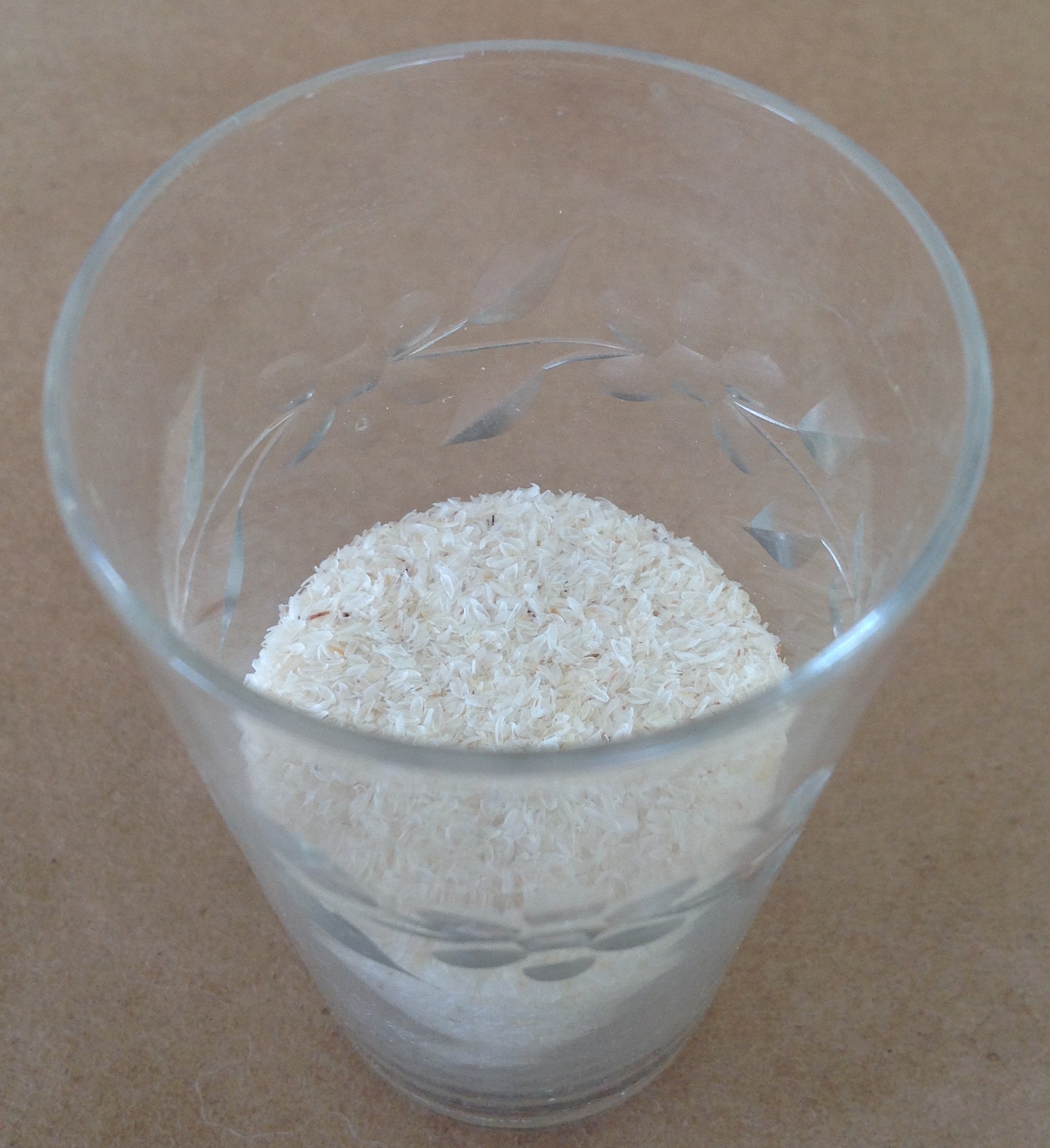
I’ve come to the conclusion that a tsp of psyllium seed husk in a quarter-cup of water 20 minutes before meals just might be the easy answer for those who struggle with weight and have cravings (especially sugar cravings) or just feel hungry a lot of the time.
Psyllium seed husks contain soluble fiber, which expands in water like a sponge. The same thing happens in your GI tract – it bulks up with fluid, triggering your stretch receptors that tell you that you’ve eaten something.
How Does it Work?
By taking it before meals, it in essence increases your fiber load which fills you up faster, modulates (in this case slows) the rate at which carbohydrates (like sugars) are absorbed from the GI tract into the blood stream, and modulates (in this case lessens) your appetite. Pretty simple. Fiber is nature’s appetite suppressant, and most Americans get way less than what is recommended for health.
Here are a couple of the products I’ve used as a fiber boost.
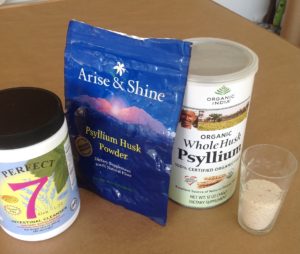
Or, Enjoy Fiber in Food
If psyllium is a bit muscilaginous (gooey) for you, experiment with the following food ideas to lead meals with fiber:
- Have a quarter cup of beans or lentils 20 minutes before sitting down for a meal. Get creative and make them salads with herbs, or breakfast beans with hoisin.
- Enjoy a generous serving of salad 20 minutes before the rest of your meal.
- Have an apple or other fibrous fruit 20 minutes before dinnertime.
Respect the Psyllium – A Gentle Caution
Remember that FLUID is important when you take psyllium or other fiber supplements. Drink lots of water – I drink a full glass of water right after a psyllium shot, and then am aware of the other fluids (coffee, herbal teas and herbal waters) that I boost when I’m in full psyllium practice.
There are reports of pallium blocking people’s esophagus and causing obstructions. All the fiber supplements have this warning. So, drink lots of water. If this makes you nervous, start nice and slow – 1/2 tsp in 8 oz water, for example. If you’ve had or have a GI obstruction-prone condition like Crohns or colitis, or have had a bowel resection, talk to your healthcare pro, and do this under the supervision of your skilled nutritionist.
Enjoy the psyllium experiment! And report back – what works for you to “bulk up”?








